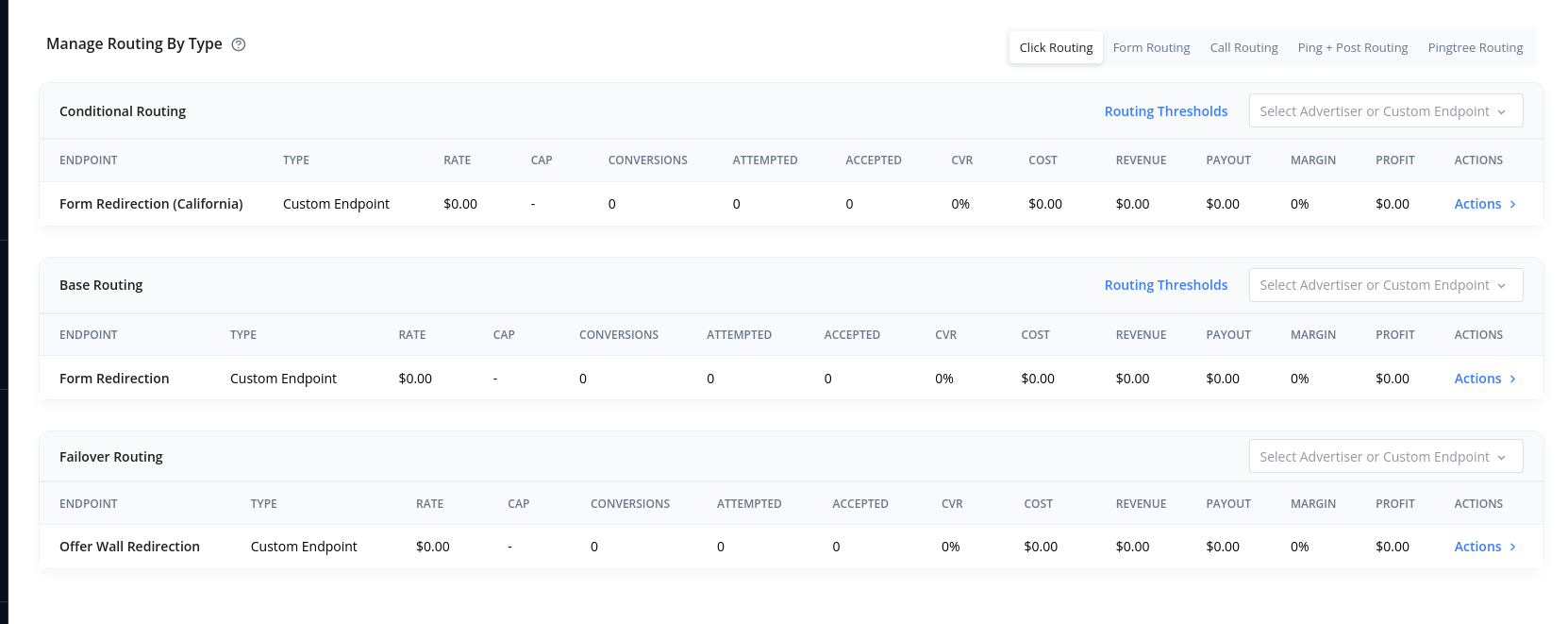Routing Distribution Logic
The Basics
In lead distribution, the goal is to match incoming leads with the most appropriate destination—whether that’s a form, offer wall, or buyer endpoint. Routing Distribution defines the method and logic used to make that decision. Pingtree offers several configurable routing methods that adapt to your campaign needs, buyer contracts, and lead filtering rules.
Real-World Use Case
You’ve got traffic hitting a high-performing campaign. Some leads should:- Go straight to a branded form.
- Be redirected to an offer wall if they’re in specific states.
- Hit a ping/post auction to maximize yield.
- Be rerouted to a fallback if caps are hit or filters fail.
Types of Routing Distribution
Pingtree supports five core routing distribution methods, three of which share a unified configuration structure:Click Routing / Form Routing / Call Routing*
These are direct distribution methods that forward the lead based on filters and logic you define.
Note: Call Routing coming soon
Pingtree Routing
Posts lead data to multiple buyers in a ranked, priority-based order until one accepts the lead.
Ping+Post Routing
Executes a real-time bidding process where the lead is first pinged to buyers for eligibility and pricing. Once responses are received, the system posts the lead to the highest bidder that meets your filters. This can be done:- Sequentially: Posting to buyers one by one based on priority until a successful post.
- Simultaneously: Posting to all eligible buyers at once and assigning the lead to the highest bid.

Where to Find Routing Distribution Types
To view or configure these methods:- Go to your campaign.
- Navigate to the Distribution section.
- Select the Routing Logic tab.